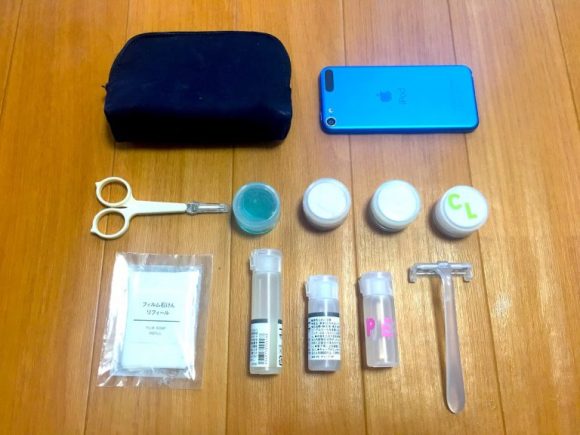
Just breeze past that luggage carousel and go right into your vacation!
Seasoned travelers know how to make efficient use of their suitcase space, but it takes a real pro to travel without a suitcase at all.
Want to know how to pare down your travel gear? Taiwan-based writer and blogger Kazuhiro Maehara has graciously agreed to let us translate his tips for getting everything you need into one small shoulder bag. Take it away, Mr. Maehara!
______________________________________________________________________
Hello, I’m Mae-chan. I wouldn’t really call myself a minimalist, but when I travel abroad, I only take a backpack.
When getting ready to travel abroad, packing is always a hassle. Even for just a four-day trip, the things we need to bring seem to fill a suitcase to overflowing. Additionally, the recent spread of LCCs (Low Cost Carriers) has made affordable weekend travel a possibility, but luggage must be kept as light as possible.
Since I think many people face this same problem, I’ve decided to share a few of the strategies I use when packing, and I hope you find them helpful.
#1. Buy socks that can be tightly rolled up
One lesson I have learned in four years of travel is that it is essential to buy socks that can be tightly rolled up. For example, I recommend Naigai’s N-platz socks. I read about them in Tsuyoshi Takashiro’s book Lifepacking 2.1 and was surprised how small you can actually get them.
In the picture above, the N-platz socks are on the far right. I’m sorry you have to look at my old socks, but anyway, you can see what a size difference there is between those and the other regular socks.
I can also recommend Uniqlo’s Air Rhythm line. Not just the socks, but also the t-shirts, boxers and briefs roll up really tightly. Get a few of those and your underthings will hardly take up any room at all.
On their own, things like socks and underwear seem very small and you wouldn’t think they would take up much space, but put together a week’s worth and it starts to get quite bulky, so if you want to lighten your luggage, start by trying some light socks.
#2. Use vacuum bags
Many travelers already use these, so perhaps they’re already a standard travel item, but for clothes, vacuum bags really are useful. Clothes take up the most space in your luggage, but the reason for that is mostly the air that gets crammed in along with them. Vacuum bags are recommended because they get rid of all that air for you.
But there is a knack to using them. If you just stuff the clothes in there without neatly folding them, it won’t make much of a difference in size, as I learned through bitter experience. So don’t be a slob like I was and take the time to neatly fold your clothes in the bag and you’ll really be able to get a lot of air out.
With your tightly rolled socks and your vacuum-packed outfits, your clothing should be flat as a cracker in your bag!
#3. Use compression clothes in cold weather
Still, even with the tips above, there are times when you will need more bulky clothes, particularly when traveling to colder places.
One space-saving tip for cold-weather packing is to bring compression clothes, which keep you warm with fewer layers. Originally made as protection against economy-class syndrome caused by staying in the same position on long flights, these clothes stick to your body, keeping you warm.
I didn’t believe they would work either, but this February, I spent a week in the sub-zero temperatures of Hokkaido wearing just compression pants and jeans on my lower body and was fine.
Even if you aren’t going to a cold place, wearing these on the plane improves circulation and protects against that economy-class syndrome, so they are pretty useful items to have.
#4. Put your toiletries in smaller containers
Toiletries are a necessity for travel abroad, but the size of their containers adds a lot of bulk. When I traveled with a suitcase, I didn’t really notice, but once I started using just a shoulder bag, I realized it would be better to change to travel-size containers. By using the handy travel-size containers sold at Muji, I was able to really lighten my load.
I got my shampoo, soap, shaving gel, hair wax, antiperspirant, face wash, lotion, cologne and more into a case about the size of a smartphone.
Even the so-called travel sizes of shampoo have more than you will use on one trip, so don’t hesitate to go even smaller.
When I first started doing this with all my toiletries it felt a bit over-the-top, but once I felt how light my bag was, it was completely worth it.
#5. Get the new film-type toiletries
Muji has been making special travel products for a few years now. For example, they are now selling film-type soap and toothpaste.
I wasn’t sure I would like using these at first, but after trying them, I was surprised to find they foam up just like the standard versions. If you are not set on your soap being organic or a particular brand, these film-types make for a good substitute.
They also have things like antiperspirant gel to replay spray bottles, so I’d say use as many as you like to really save on space.
#6. Take multi-purpose items
If you search the world, there are many items with multiple uses. I recommend using these to lighten your luggage. For example, when I travel I take along the cloth pictured above, an Afghan shemagh.
Shemagh have long been used in the Middle East, and in one piece of fabric you’ll have a bath towel, small blanket, scarf, head cover, mask, and many other useful things.
I also recommend looking for other things like a combination mobile battery and charger, a combination towel and wash cloth, and the popular Japanese multipurpose tenugui cloths.
#7. Check what’s available at your destination
Some of you may balk at the idea of using your bath towel as a scarf. In that case, check what kind of complimentary items are available at your destination and you won’t have to pack them at all.
For example, at overseas hotels with three or more stars, you’ll have towels, toothbrushes and robes. Many Airbnbs and guesthouses these days offer similar amenities, so you may not even need to pack towels, toothbrushes or pajamas.
When I went to Australia, I bought a travel kettle, but all of the guesthouses and rentals supplied a kettle for guests to use, so I was just lugging around pointless junk. Check online beforehand what’s available and you won’t end up doing the same.
#8. Take a SIM free smartphone you can use overseas
When you go overseas do you rent a pocket wifi? In Japan, many of the smartphones offered by major carriers like Docomo cannot be used overseas without incurring roaming fees.
However, if you purchase a cheap smartphone that can use SIM cards, you can just purchase a prepaid SIM card at the airport when you land and use your phone as usual. These cost just 1000 to 3000 yen (US$8-26), so they end up being cheaper than rental wifi.
#9. Get a “phablet” to combine the functions of a tablet and smartphone
Have you heard of phablets? They’re basically smartphones with a screen larger than five inches.
For iPhone users, this is the “plus” in the iPhone 7 Plus. Take one of these on your travels and there’s no need to bring along a separate tablet. A screen this size works reasonably well to watch movies and read manga and other things.
Of course, some people may find a small screen easier to use, but if you normally bring a phone and tablet, a phablet is one option to shrink that luggage.
#10. Digitize what can be digitized
Another small thing that ends up taking a lot of space on travels is paper products.
Hotel confirmations, travel insurance papers, reading material for the plane, and so on. But that’s mostly wasted space.
One tip is to use your smartphone to take photos of important papers. You can use the zoom function to look at them when needed. Another is to load your reading material onto a smartphone reader like the Kindle app. No matter how many books you feel like bringing, it won’t add any weight!
Of course, a guidebook is probably more handy in book form, but other than that isn’t it easier to digitize?
#11. Learn from your senpais
When I first decided to travel super light, I referred to a lot of sources for ideas, including writer and filmmaker Tsuyoshi Takashiro’s magazine LIFEPACKING, which I found especially helpful. It introduces a lot of the strategies he’s picked up in his globetrotting.
The magazine has gotten mixed reviews, but a lot of the tips have been useful in my travels abroad, so I recommend it. The Amazon Kindle version is available for between 300 and 600 yen (US$2.50-5.00), so it’s really handy as a reference. (Editor’s note: only available in Japanese currently)
#12. Use a checklist
This idea is so simple I hesitate to even mention it, but it’s been extremely effective for me. That is, make a checklist of what you bring.
Use your smartphone note app or post it on your blog or whatever, but make a list of everything you bring on your trip and keep it. You’ll be able to see at a glance what you packed on your most recent trip. Then, while you are packing for your next trip, take a look.
If you think, “Ah, actually, I didn’t use that thing at all…”, then don’t bring it this time, however much you think you want to.
Using this method I realized I never used a drone camera I had been packing, so I stopped bringing it.
#13. Keep traveling
This is my last tip. Perhaps you can file it under “where there’s a will, there’s a way.” Truthfully, I’ve found it to be the most effective method in learning to travel light.
Keep traveling.
At the moment, I travel abroad with just a 30-liter backpack, but it was a steep learning curve. No matter how many decluttering books or blogs you read, it’s no match for being at your wit’s end in real life.
For me, after I had been told, “Sorry the carry-on limit is 10 kilos. You’ll have to check and pay for that,” about 50 times at the airport, I learned to distinguish what is really necessary and what isn’t.
For you, perhaps it will be hauling an overloaded bag down the street in a foreign country, thinking for the hundredth time, “God, these straps are tearing into my shoulders. I should find some way to lighten the load….”
__________________________________________________________________
Thanks for the tips, Maehara-san! And if you’re looking for some destination ideas to try out these new travel hacks, have a look at this list of the top places to visit in each prefecture of Japan.
Source, images: Kazuhiro Maehara

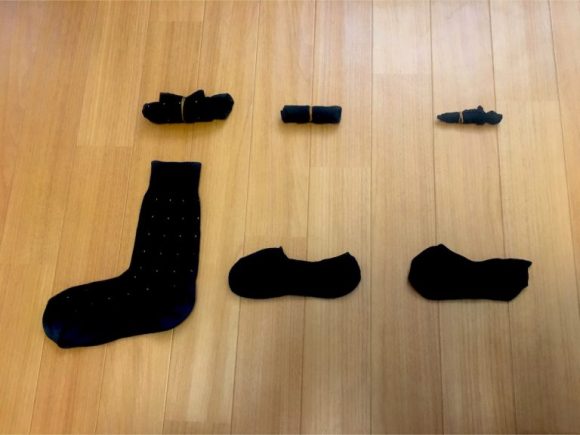
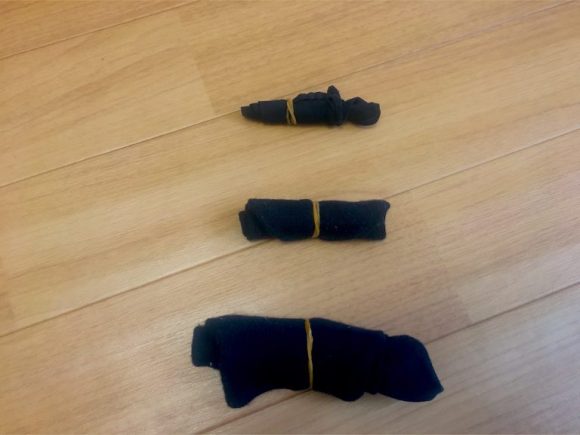
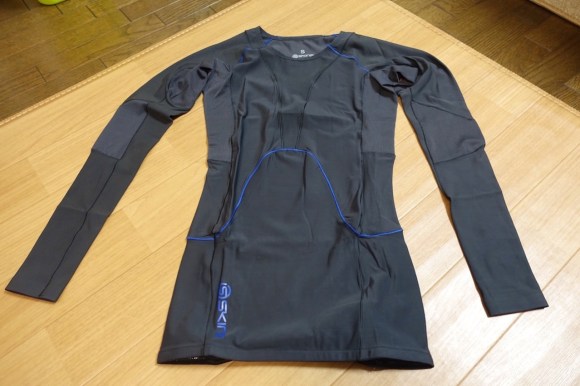
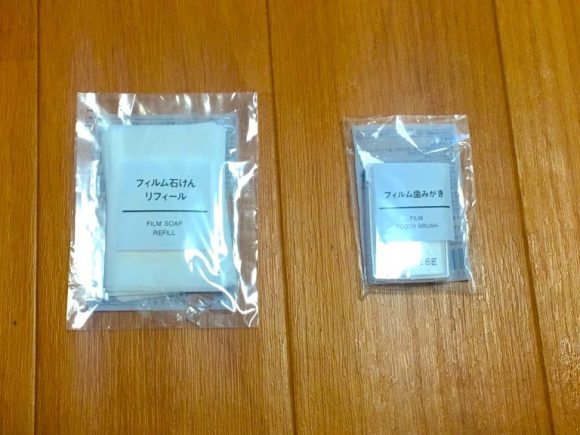
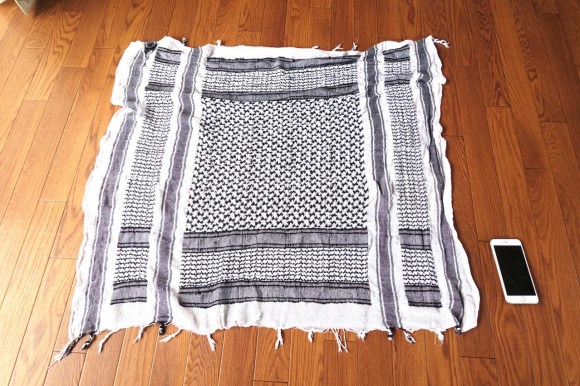
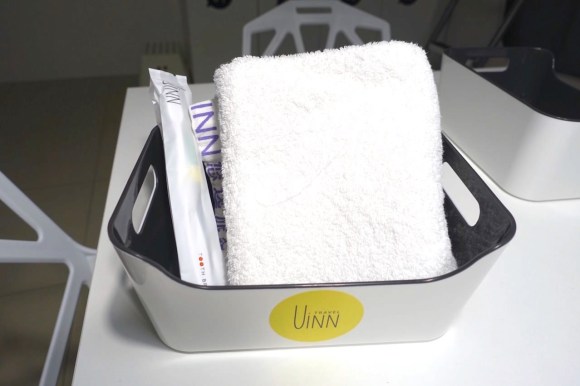
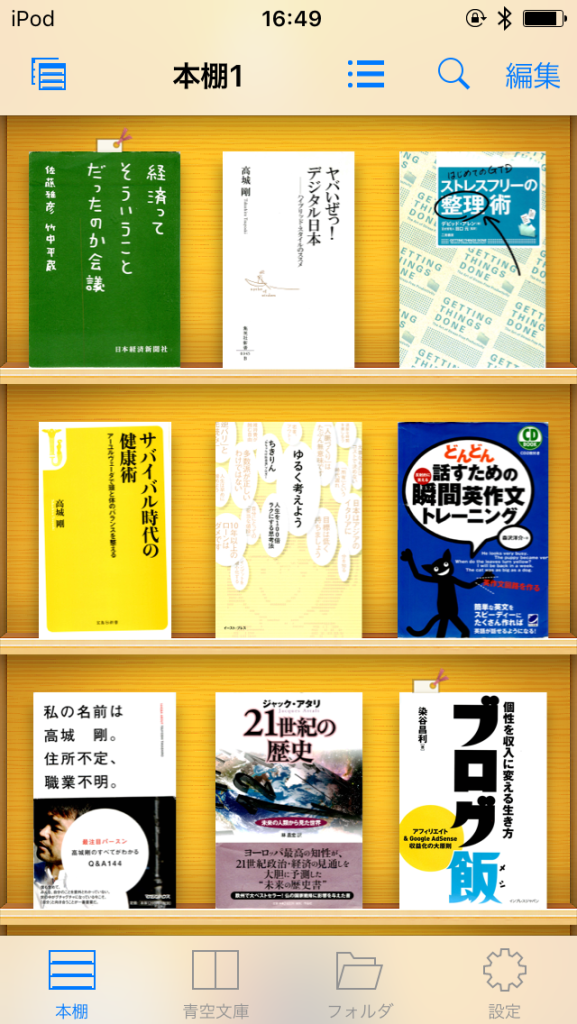
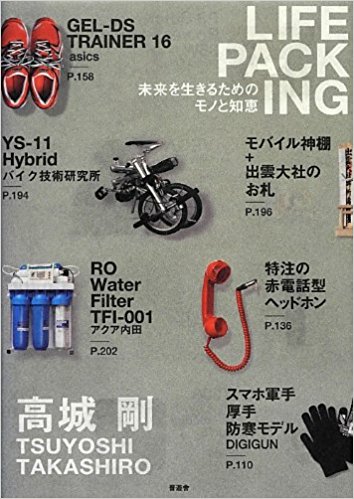
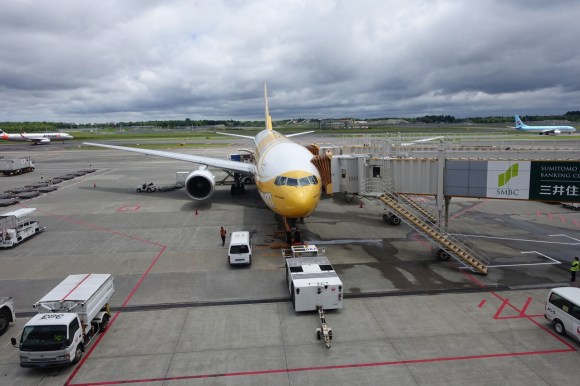
 Travel through Japan with no suitcase? That’s the goal of new item-sharing travel service Locarry
Travel through Japan with no suitcase? That’s the goal of new item-sharing travel service Locarry Next time you go sightseeing, use a tote bag instead of a cross-body bag, says Japanese traveler
Next time you go sightseeing, use a tote bag instead of a cross-body bag, says Japanese traveler Shinkansen will require reservations for large suitcases, charge penalty fees for those without
Shinkansen will require reservations for large suitcases, charge penalty fees for those without Japanese man helps lost Taiwanese tourists, thanks them instead, warms the hearts of netizens
Japanese man helps lost Taiwanese tourists, thanks them instead, warms the hearts of netizens 5 tips for staying healthy while traveling in Japan this winter!
5 tips for staying healthy while traveling in Japan this winter! Foreigner’s request for help in Tokyo makes us sad for the state of society
Foreigner’s request for help in Tokyo makes us sad for the state of society Japanese city loses residents’ personal data, which was on paper being transported on a windy day
Japanese city loses residents’ personal data, which was on paper being transported on a windy day Historical figures get manga makeovers from artists of Spy x Family, My Hero Academia and more
Historical figures get manga makeovers from artists of Spy x Family, My Hero Academia and more Ghibli Park now selling “Grilled Frogs” from food cart in Valley of Witches
Ghibli Park now selling “Grilled Frogs” from food cart in Valley of Witches Harajuku Station’s beautiful old wooden building is set to return, with a new complex around it
Harajuku Station’s beautiful old wooden building is set to return, with a new complex around it Akihabara pop-up shop sells goods made by Japanese prison inmates
Akihabara pop-up shop sells goods made by Japanese prison inmates Suntory x Super Mario collaboration creates a clever way to transform into Mario【Videos】
Suntory x Super Mario collaboration creates a clever way to transform into Mario【Videos】 Red light district sushi restaurant in Tokyo shows us just how wrong we were about it
Red light district sushi restaurant in Tokyo shows us just how wrong we were about it Princesses, fruits, and blacksmiths: Study reveals the 30 most unusual family names in Japan
Princesses, fruits, and blacksmiths: Study reveals the 30 most unusual family names in Japan New private rooms on Tokaido Shinkansen change the way we travel from Tokyo to Kyoto
New private rooms on Tokaido Shinkansen change the way we travel from Tokyo to Kyoto McDonald’s new Happy Meals offer up cute and practical Sanrio lifestyle goods
McDonald’s new Happy Meals offer up cute and practical Sanrio lifestyle goods Japanese ramen restaurants under pressure from new yen banknotes
Japanese ramen restaurants under pressure from new yen banknotes French Fries Bread in Tokyo’s Shibuya becomes a hit on social media
French Fries Bread in Tokyo’s Shibuya becomes a hit on social media Studio Ghibli releases new action figures featuring Nausicaä of the Valley of the Wind characters
Studio Ghibli releases new action figures featuring Nausicaä of the Valley of the Wind characters Tokyo Tsukiji fish market site to be redeveloped with 50,000-seat stadium, hotel, shopping center
Tokyo Tsukiji fish market site to be redeveloped with 50,000-seat stadium, hotel, shopping center All-you-can-drink Starbucks and amazing views part of Tokyo’s new 170 meter-high sky lounge
All-you-can-drink Starbucks and amazing views part of Tokyo’s new 170 meter-high sky lounge Beautiful Ghibli sealing wax kits let you create accessories and elegant letter decorations【Pics】
Beautiful Ghibli sealing wax kits let you create accessories and elegant letter decorations【Pics】 Studio Ghibli releases Kiki’s Delivery Service chocolate cake pouches in Japan
Studio Ghibli releases Kiki’s Delivery Service chocolate cake pouches in Japan New definition of “Japanese whiskey” goes into effect to prevent fakes from fooling overseas buyers
New definition of “Japanese whiskey” goes into effect to prevent fakes from fooling overseas buyers Our Japanese reporter visits Costco in the U.S., finds super American and very Japanese things
Our Japanese reporter visits Costco in the U.S., finds super American and very Japanese things Studio Ghibli unveils Mother’s Day gift set that captures the love in My Neighbour Totoro
Studio Ghibli unveils Mother’s Day gift set that captures the love in My Neighbour Totoro More foreign tourists than ever before in history visited Japan last month
More foreign tourists than ever before in history visited Japan last month New Pokémon cakes let you eat your way through Pikachu and all the Eevee evolutions
New Pokémon cakes let you eat your way through Pikachu and all the Eevee evolutions Sales of Japan’s most convenient train ticket/shopping payment cards suspended indefinitely
Sales of Japan’s most convenient train ticket/shopping payment cards suspended indefinitely Sold-out Studio Ghibli desktop humidifiers are back so Totoro can help you through the dry season
Sold-out Studio Ghibli desktop humidifiers are back so Totoro can help you through the dry season Japanese government to make first change to romanization spelling rules since the 1950s
Japanese government to make first change to romanization spelling rules since the 1950s Ghibli founders Toshio Suzuki and Hayao Miyazaki contribute to Japanese whisky Totoro label design
Ghibli founders Toshio Suzuki and Hayao Miyazaki contribute to Japanese whisky Totoro label design Doraemon found buried at sea as scene from 1993 anime becomes real life【Photos】
Doraemon found buried at sea as scene from 1993 anime becomes real life【Photos】 Tokyo’s most famous Starbucks is closed
Tokyo’s most famous Starbucks is closed One Piece characters’ nationalities revealed, but fans have mixed opinions
One Piece characters’ nationalities revealed, but fans have mixed opinions We asked a Uniqlo employee what four things we should buy and their suggestions didn’t disappoint
We asked a Uniqlo employee what four things we should buy and their suggestions didn’t disappoint We try out some space-saving jeans-folding wizardry, perfect for travelling light【Photos】
We try out some space-saving jeans-folding wizardry, perfect for travelling light【Photos】 Traveling with Totoro (and Kiki too)! Official Studio Ghibli suitcases go on sale
Traveling with Totoro (and Kiki too)! Official Studio Ghibli suitcases go on sale Shinkansen travel tip: A clever way to keep your suitcase from rolling around on the bullet train
Shinkansen travel tip: A clever way to keep your suitcase from rolling around on the bullet train Pokémon travel gear lineup includes transformable pillows to keep your neck comfy and heart happy
Pokémon travel gear lineup includes transformable pillows to keep your neck comfy and heart happy What’s the best way to spend 1,000 yen at Muji Japan?
What’s the best way to spend 1,000 yen at Muji Japan? Huge price hike for Japan Rail Pass triggers huge drop in foreign travelers who’ll buy it【Survey】
Huge price hike for Japan Rail Pass triggers huge drop in foreign travelers who’ll buy it【Survey】 New heated clothes hanger will dry your clothes in any type of weather
New heated clothes hanger will dry your clothes in any type of weather How to put together an earthquake/typhoon preparedness kit at the 100 yen shop
How to put together an earthquake/typhoon preparedness kit at the 100 yen shop Free alcohol and curry make this cheap capsule hotel near Shinjuku Station a great place to stay
Free alcohol and curry make this cheap capsule hotel near Shinjuku Station a great place to stay 7 things that surprise a visitor to Laos 【Photos】
7 things that surprise a visitor to Laos 【Photos】 Get the most out of your visit to Japan with these tourist-only deals 【Ninja Life Skills】
Get the most out of your visit to Japan with these tourist-only deals 【Ninja Life Skills】 This remote island guest house may have converted our “private rooms only” traveling reporter
This remote island guest house may have converted our “private rooms only” traveling reporter “Supercute cooking” expert Yuki teaches us how to make Spirited Away’s “No-Face” yakisoba
“Supercute cooking” expert Yuki teaches us how to make Spirited Away’s “No-Face” yakisoba Comiket for beginners: 7 tips for surviving Summer Comic Market
Comiket for beginners: 7 tips for surviving Summer Comic Market Totoro, Soot Sprites ready to head outdoors with you in new Ghibli/Outdoor Products bag collab
Totoro, Soot Sprites ready to head outdoors with you in new Ghibli/Outdoor Products bag collab
Leave a Reply